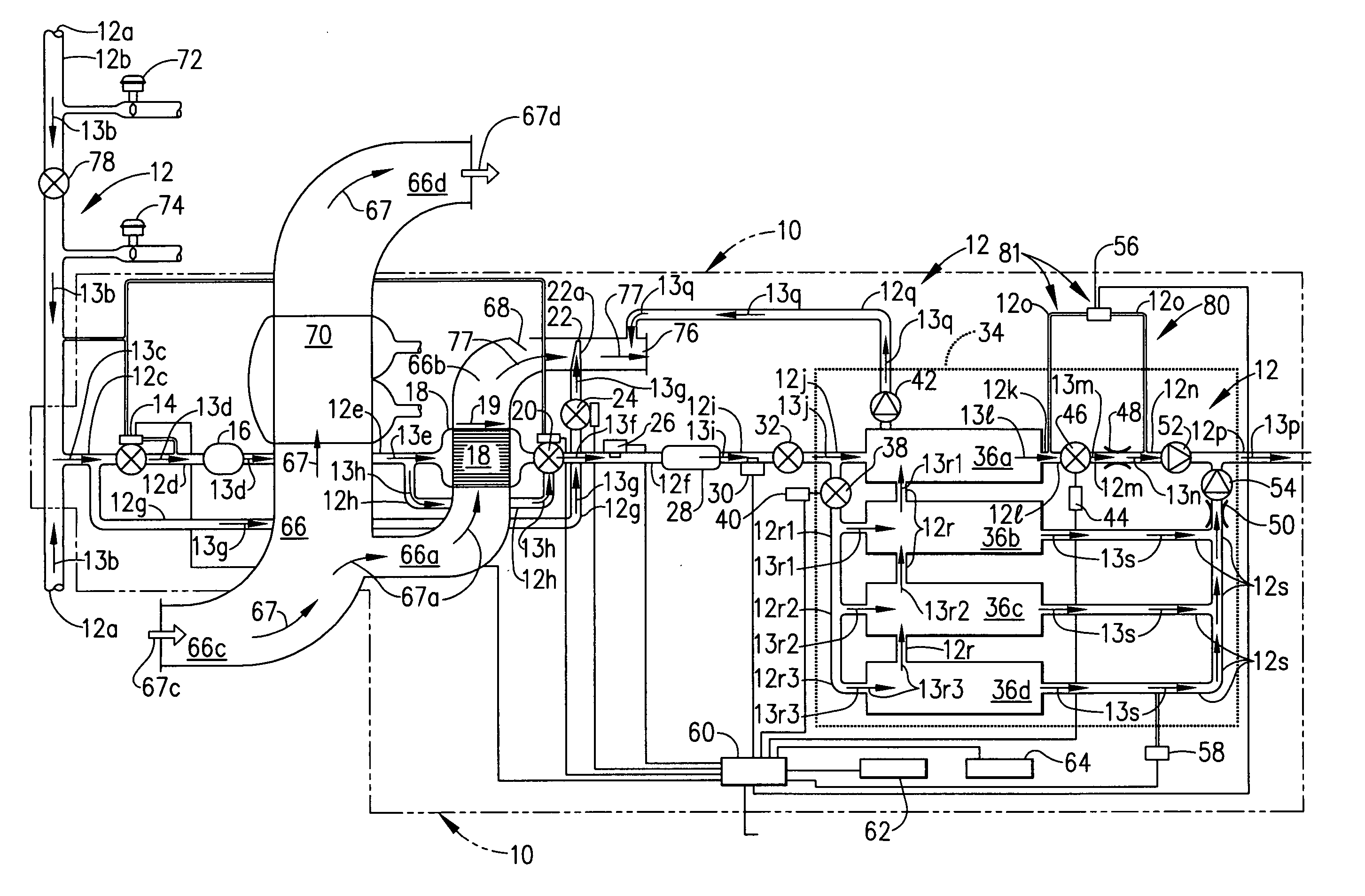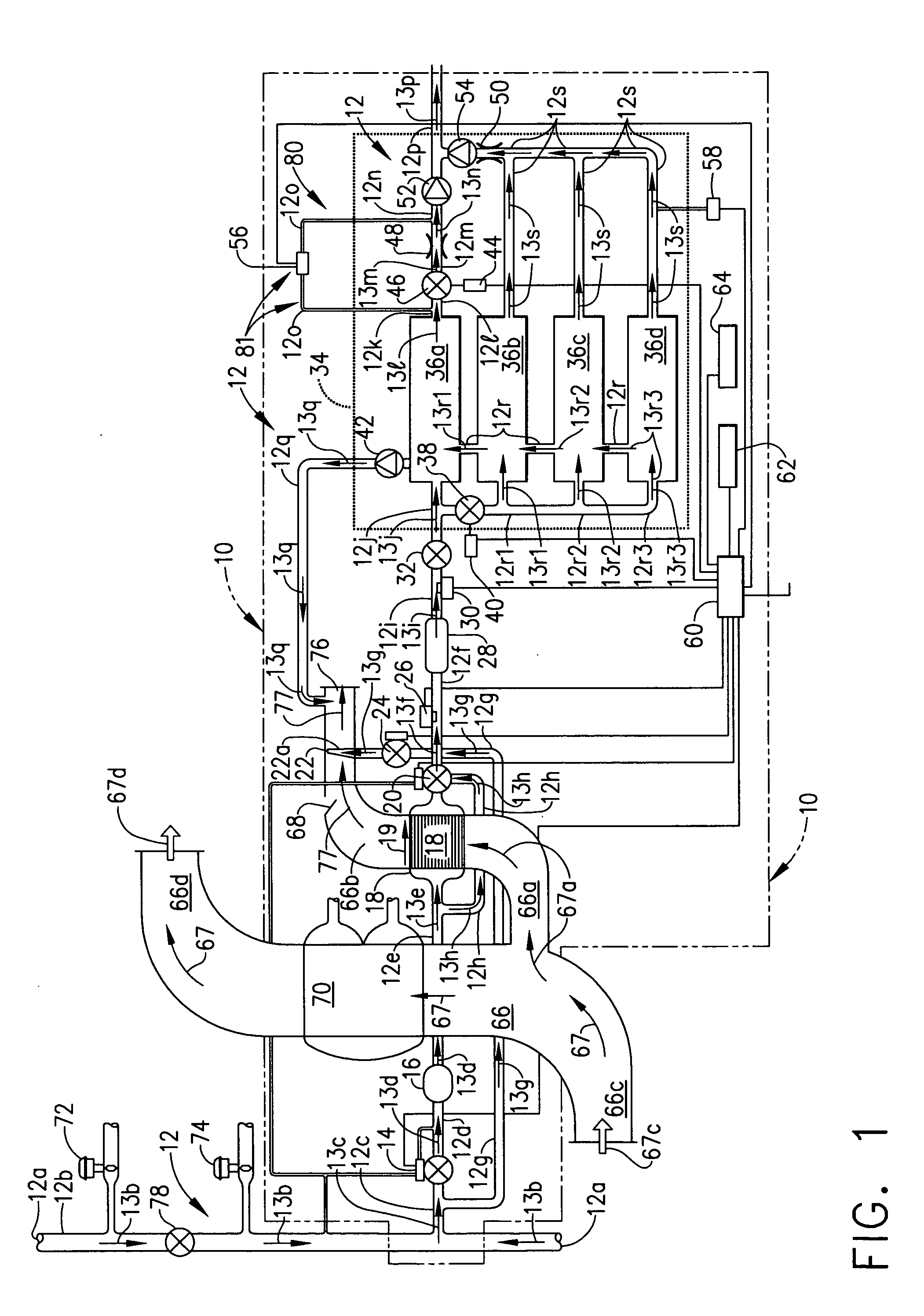Gas generating system and method for inerting aircraft fuel tanks
a fuel tank and gas generation system technology, applied in the field of gas generation systems, can solve the problems of displacement of approximately 3.5% of the volume of the tank, inefficiency associated with maintenance foam removal, art inerting system, etc., to prevent the entry of contaminants, prevent nitrogen flow, and prevent the effect of nitrogen flow
- Summary
- Abstract
- Description
- Claims
- Application Information
AI Technical Summary
Benefits of technology
Problems solved by technology
Method used
Image
Examples
Embodiment Construction
[0019] The following detailed description is of the best currently contemplated modes of carrying out the invention. The description is not to be taken in a limiting sense, but is made merely for the purpose of illustrating the general principles of the invention, since the scope of the invention is best defined by the appended claims.
[0020] Broadly, the present invention provides a system and method for generating a gas from an air stream; for example, isolating nitrogen from an air mixture and providing the isolated nitrogen for use as an inerting agent. Unlike inventions of the prior art, which require a host of specific components and costly, redundant subprocesses, the present invention may utilize a minimal and flexible set of components as well as streamlined subprocesses, resulting in a cost-effective system and method.
[0021] More specifically, the present invention recovers nitrogen from an air stream, using the recovered nitrogen for inerting systems or other application...
PUM
| Property | Measurement | Unit |
|---|---|---|
| temperature | aaaaa | aaaaa |
| temperature | aaaaa | aaaaa |
| temperature | aaaaa | aaaaa |
Abstract
Description
Claims
Application Information
 Login to View More
Login to View More - R&D
- Intellectual Property
- Life Sciences
- Materials
- Tech Scout
- Unparalleled Data Quality
- Higher Quality Content
- 60% Fewer Hallucinations
Browse by: Latest US Patents, China's latest patents, Technical Efficacy Thesaurus, Application Domain, Technology Topic, Popular Technical Reports.
© 2025 PatSnap. All rights reserved.Legal|Privacy policy|Modern Slavery Act Transparency Statement|Sitemap|About US| Contact US: help@patsnap.com



